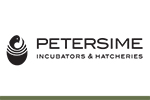 By: Prof. Dr. Mohammed Ali Maki Jassim Al-Rubaie - Iraq
By: Prof. Dr. Mohammed Ali Maki Jassim Al-Rubaie - Iraq
Food Additives
The effects of dietary supplements on the quality of frozen meat have been discussed previously; now, the focus is on meat additives. Phosphates have been used in poultry products to improve water retention, texture, color, flavor, as well as to control microbial contamination, growth, and to reduce freezing damage and protein denaturation. All treatments resulted in reduced drip loss and enhanced water-binding capabilities. Both sodium chloride and phosphates caused swelling due to electrostatic repulsion, allowing more water to be retained in the myofibril networks. It was concluded that treating chicken breasts with trisodium phosphate and sodium tripolyphosphate significantly reduced drip and cooking losses, as well as the formation of ice crystals and shrinkage from freezing of myofibrils.
The ability of chicken meat to bind water was the most important factor in maintaining the quality of chicken breasts during prolonged frozen storage, and this could be achieved by treating the breasts with a 10% trisodium phosphate solution and sodium tripolyphosphate before freezing. The effects of phosphates on breast texture were unclear; their effect seemed to be influenced by their interaction with processing parameters (electrical stimulation, stunning time, and post-mortem time). Addition during post-rigor did not affect the texture of the breast.
An interesting special case in frozen poultry is breast cubes. Frozen cooked chicken breast cubes are used in food services but often show many cracked pieces after the freezing step. These cracked pieces are often discarded or sold as low-quality products. To improve the juiciness and yield of the meat, chicken breast cubes are usually tumbled to increase their ability to retain water. They studied the effect of moisture content on cracking, as well as the effect of 1% sodium tripolyphosphate (STPP) and transglutaminase (TGase) on preventing cracking of frozen broiler chicken breast cubes. They noted that moisture integrated during tumbling makes the cubes more prone to cracking during freezing. Tumbling with 1% STPP reduced cracking to 24%, and tumbling with 0.5% TGase reduced cracking to 25%, resulting in narrower and shorter cracks, thereby improving cube quality.
Handling and Freezing Process
The freezing process itself is a major factor affecting the quality of frozen poultry. The freezing rate determines the quality of frozen poultry, as slow freezing rates result in significant drip losses upon thawing, reduced water retention capacity, and protein losses. These authors suggested that protein degradation increases due to extensive cell damage caused by slow freezing rates (18°C compared to -80°C), leading to the release of enzymes by lysosomes. Slow freezing was associated with an increase in color defects in frozen poultry.
Freezing cracks are typically associated with deep cooling and changes in volume related to the phase transition of water and ice. Cracks can affect only the surface or originate from the inside. As discussed earlier, air-blast freezing, still air freezing, and deep freezing were tested, offering a wide range of freezing rates. Air-blast and still-air freezing had very slow freezing rates that avoided cracking but significantly increased freezing and cooking losses. Deep freezing provided the best yield for meat, but it favored cracking. Faster freezing rates resulted in a wider gap and longer crack lines. Deep freezing at a rate of 37.5 cm/hour produced 38.34% of cracked pieces, and increasing the freezing rate produced more cracked pieces.
Storage and Packaging
The effects of frozen storage conditions and thawing on poultry quality were also investigated. Poultry can be safely refrozen (from sensory, microbiological, and chemical perspectives) multiple times (up to five refreezing steps), provided the meat is handled properly. Regarding specific pathogens, it has been reported that thawing temperatures close to 0°C favor the survival of Campylobacter, and high thawing temperatures (22-30°C) are not particularly dangerous regarding the survival of Salmonella, Escherichia coli, and Staphylococcus aureus. The main functions of packaging are to protect the product from bruising, physical and chemical changes, microbial contamination, provide information to retailers and consumers, and offer an attractive and convenient display for the product. For frozen poultry, gas permeability is important when choosing packaging material, as the presence of oxygen affects myoglobin oxidation and fat odor in the meat. Poultry meat requires less color maintenance compared to red meats. Red meats require an oxygen supply to maintain the surface color, while poultry only requires this for short periods. A well-designed package that provides easy and convenient handling also helps maintain food quality until the final destination.
They tested packaging materials with different oxygen and vapor permeability to package poultry to be frozen, thawed, and stored at 5°C for several days. They concluded that freezing poultry before storage in the refrigerator increased the development of spoilage when using high-permeability films. When using vacuum or oxygen-impermeable films, lipid and protein degradation activities of cold-loving bacteria were reduced. Uncooked poultry can be frozen and thawed multiple times (the storage period tested was 35 days) without a significant increase in microbes.
Polyethylene bags are generally used to package poultry before immersion chilling. The packaging methods used in freezing meat mainly rely on modifications of the gaseous atmosphere surrounding the meat. Skin packaging is one of the preferred methods for frozen poultry, as its barrier properties significantly affect the redness of the product, and its thickness affects the heat transfer rate during reheating and cooling. Another advantage is its water vapor barrier, which prevents ice sublimation and thus drying, preventing freezer burn and weight loss.
Considerations for Choosing Packaging for Frozen Poultry Meat:
Enzyme Activity: Enzyme activity slows down at low temperatures but does not stop. The primary active enzymes are those that degrade fat (lipase and phospholipase) and proteins, leading to quality losses.
Fat Oxidation: Poultry meat, especially mechanically deboned poultry, is prone to fat oxidation. The main strategies to prevent this are using free radical scavengers (antioxidants) and using packaging systems that limit oxygen entry.
Moisture Migration: This may result from sublimation, moisture absorption, and redistribution in foods, re-crystallization of ice, and drip loss during thawing. Moisture loss affects the appearance, juiciness, and texture of poultry, causing weight loss, but some surface drying is necessary to delay microbial growth and avoid a glassy appearance on the meat's surface.
Freezing and Thawing: The formation of protein aggregates due to freezing may result in incomplete rehydration during thawing.
Freezer Burn: This defect is caused by exposure of the food surface to the external environment of the storage facility.
Most of these factors can be controlled with appropriate packaging (e.g., airtight moisture- and vapor-impermeable films, high relative humidity in storage facilities) and handling to avoid packaging damage.
Microbiological Quality of Frozen Poultry Meat: Safety Issues
The shelf life of frozen products depends on product characteristics, pre-freezing processing, freezing processes, packaging membranes, packaging procedures, and storage conditions. The spoilage of poultry meat is largely attributed to Gram-negative bacteria that cause allergies, such as Pseudomonas spp., Micrococcus spp., and Achromobacter spp. Freezing storage led to shifts in poultry microbiota, increasing the population of cold-tolerant organisms. They identified the impact of different cooling and freezing temperatures on the microbiological profile of poultry. Cold-loving bacteria increased in chilled poultry, and cold-loving bacteria increased in poultry stored at refrigerated temperatures, but not under freezing conditions. Coliforms and E. coli decreased under all refrigerated and frozen conditions tested, and no significant changes in Salmonella species were observed at any storage temperature. There was no significant change in the number of any organisms after frozen storage at -18°C.
Microbiological Shelf Life and Quality of Frozen Broiler Chicken
It was reported that long-term frozen storage did not cause significant changes in bacterial counts in carcasses stored at -12°C, while it slightly decreased at -18°C storage. Relatively high sensory scores were obtained for frozen carcasses, despite some freezer burn in certain pieces, and this defect increased with storage time. Drip losses did not significantly increase, while free fatty acids and peroxide values increased with storage time.
The most common pathogens in poultry, in order of prevalence, are Campylobacter spp., Listeria spp., E. coli, and Salmonella spp. The most common microorganisms causing spoilage are Pseudomonas spp., associated with spoilage of refrigerated poultry stored in aerobic conditions. For example, Candida zeylanoides causes spoilage in refrigerated poultry stored under aerobic or anaerobic conditions, as well as protein- or fat-hydrolyzing yeasts. High microbial loads are associated with off-flavors, primarily linked to sulfur-containing compounds, and viscosity in poultry. Both defects become noticeable when microbial levels reach 10⁶ to 10⁸ colony-forming units/cm². Treatments such as washing with organic acids, modified atmosphere packaging, and irradiation have been investigated to reduce microbial loads in poultry, but they often cause undesirable changes in sensory properties, so none of these appear to be a definitive solution.
Conclusion
The main concerns regarding the quality of frozen poultry are meat discoloration, fat oxidation, texture changes, and reduced water-holding capacity. Several factors affect frozen meat quality, and if improved, they can effectively ensure minimal changes to meat quality due to freezing and frozen storage. These factors include:
The bird’s diet
Pre-freezing aging
Proper meat classification
Appropriate packaging to avoid oxygen presence, ice


















